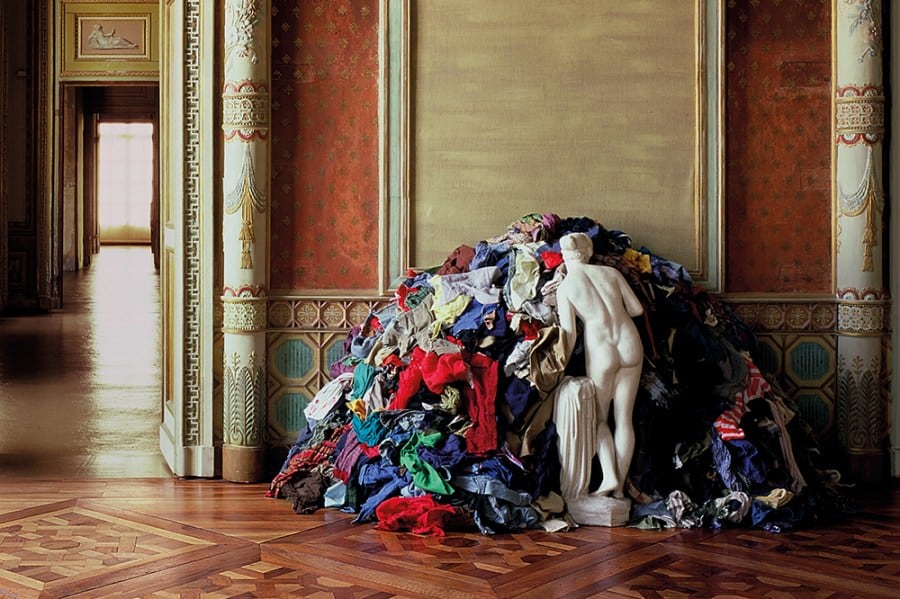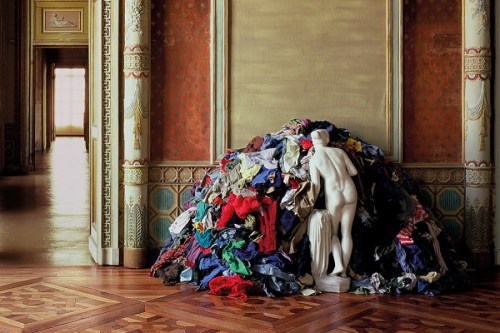
Venus of the Rags (1967), Michelangelo Pistoletto. Castello di Rivoli, Turin. Photo: Paolo Pellion; courtesy the artist and Luring Augustine, New York; © the artist
Arte Povera, or ‘poor art’, is the name given to a group of artists and their work that was made in Italy in the 1960s and ’70s. The name comes from the types of materials that they worked with, from soil and twigs to rags and rubbish. Michelangelo Pistoletto (b. 1933) is probably the best known of the Arte Povera artists and his Venus of the Rags is perhaps the group’s masterpiece. It was created in 1967 in Pistoletto’s studio in Turin and what is important to know is that at the time, Pistoletto’s studio, which opened in 1965, was almost an artist-run space, like an exhibition space. When he had his show at Sperone Gallery in 1966 he just put a sign up at the gallery saying, everything’s happening at my studio, come by. The work was first shown in public at the landmark exhibition ‘Vitalità del negativo nell’arte Italiana’ (‘Vitality of the negative in Italian art’), curated by Achille Bonito Oliva at the Palazzo delle Esposizioni in Rome in November 1970. But the work was widely known from having been exhibited in Pistoletto’s studio in 1967.
This was a key year for the development of Arte Povera as a group. I don’t use the word ‘movement’ because you have to have an artist naming the movement as a movement, like André Breton; you have to have a manifesto. Movements are much more associated with early 20th-century avant-gardes or, at the latest, art movements of the 1950s and early ’60s. Arte Povera was a loose affiliation of artists, of whom Pistoletto was one of the earliest. The two oldest were Mario Merz [1925–2003] and Marisa Merz [1926–2019], followed by Pistoletto, who is now 91. It was actually Pistoletto who made a connection with the international art world, along with Piero Gilardi (1942–2023), showing with Sonnabend Gallery in Paris early in his career, in 1963.
The version of this work that is being exhibited at the Bourse de Commerce as part of ‘Arte Povera’ (9 October–20 January 2025) is one of the first three that Pistoletto made, and the first one to be shown in his studio. You can tell it’s this version because the sculpture of Venus has mica mixed in with the plaster, so it resembles white gesso but slightly shiny, and if you look closely you can see the light picking out the mica in the mixture. There is, of course, a connection between the mica in the sculptures and the mirrors that Pistoletto used as the ground for his most famous paintings.
Read full article at apollo-magazine.com

